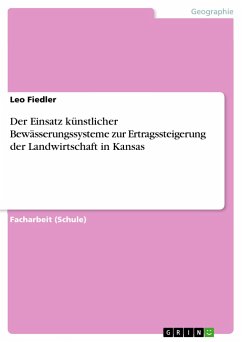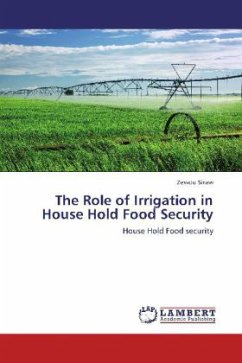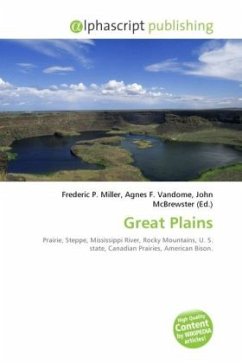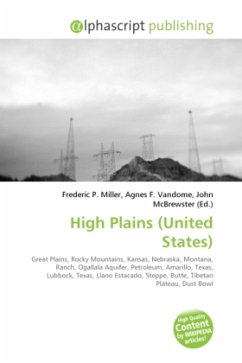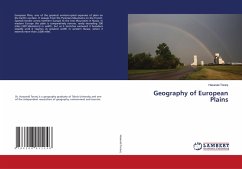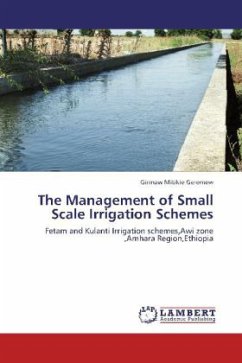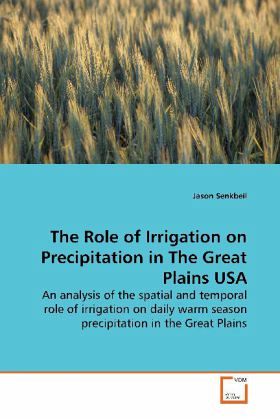
The Role of Irrigation on Precipitation in The Great Plains USA
An analysis of the spatial and temporal role of irrigation on daily warm season precipitation in the Great Plains
Versandkostenfrei!
Versandfertig in 6-10 Tagen
52,99 €
inkl. MwSt.

PAYBACK Punkte
26 °P sammeln!
This book examines the relationship between irrigation and precipitation. The relationship is explored using the Palmer Drought Severity Index (PDSI) as a proxy for irrigation use, the Spatial Synoptic Classification (SSC) as a means of classifying surface air mass type, and the use of five atmospheric flow types characterizing the synoptic flow pattern. Scenarios, at each irrigated region, involving PDSI and either air mass type or flow type were tested using both parametric and non parametric procedures. This approach yields results according to flow type and air mass type at times when irri...
This book examines the relationship between
irrigation and precipitation. The relationship is
explored using the Palmer Drought Severity Index
(PDSI) as a proxy for irrigation use, the Spatial
Synoptic Classification (SSC) as a means of
classifying surface air mass type, and the use of
five atmospheric flow types characterizing the
synoptic flow pattern. Scenarios, at each irrigated
region, involving PDSI and either air mass type or
flow type were tested using both parametric and non
parametric procedures. This approach yields results
according to flow type and air mass type at times
when irrigation was likely or not likely to be
used.
Although many spatial results are significant,
irrigation is only a minor contributor to
precipitation. The most significant irrigation
impacts are found on days when the synoptic pattern
supports uplift and irrigation is a further agent of
atmospheric destabilization. Irrigation is a
relatively trivial factor inducing precipitation on
stable days. Temporal results mirror the spatial
results. More precipitation was observed at each
region when irrigation use was higher or irrigation
efficiency was lower.
irrigation and precipitation. The relationship is
explored using the Palmer Drought Severity Index
(PDSI) as a proxy for irrigation use, the Spatial
Synoptic Classification (SSC) as a means of
classifying surface air mass type, and the use of
five atmospheric flow types characterizing the
synoptic flow pattern. Scenarios, at each irrigated
region, involving PDSI and either air mass type or
flow type were tested using both parametric and non
parametric procedures. This approach yields results
according to flow type and air mass type at times
when irrigation was likely or not likely to be
used.
Although many spatial results are significant,
irrigation is only a minor contributor to
precipitation. The most significant irrigation
impacts are found on days when the synoptic pattern
supports uplift and irrigation is a further agent of
atmospheric destabilization. Irrigation is a
relatively trivial factor inducing precipitation on
stable days. Temporal results mirror the spatial
results. More precipitation was observed at each
region when irrigation use was higher or irrigation
efficiency was lower.



